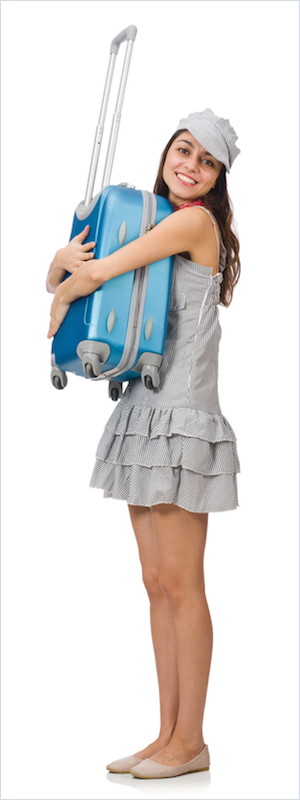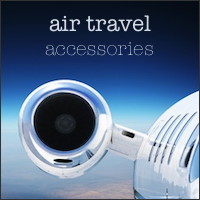Carry On Packing List

Get Set for Air Travel
Most airlines allow you to bring 2 pieces into the cabin with you. The bigger one is considered the carry on luggage and the other is a personal item like a purse, computer bag, diaper bag or something like that.
The larger bag must fit in the overhead bin and the smaller one sits under the seat ahead of you.
It's getting pretty competitive at the overhead bins and sometimes they just run out of room and will gate check bags that simply won't fit.
They will not ask you to check your personal bag but they may ask you to check the carry-on especially if you are over the size limitations but the smaller your luggage is the less likely it will be selected.
Here's a Carry on Packing List for Each Bag

The main bag is a suitcase, backpack or duffel and your airline will have restrictions regarding it's weight and size. Up until recently most carriers have been pretty relaxed about luggage size and just eyeball it unless it's flagrantly over the limit.
There is a difference between one airline and another.
Check here for your airline's carry-on packing guidelines.
The items on the packing list are in addition to the clothes you wear during the flight.
Here's how to decide which items go in which bag.
Personal Bag - Carry On Packing List
In the smaller of the two totes, which you'll keep under the seat in front of you, carry all of the necessities of the flight. This is the tote that will be most accessible to you when you're underway. Here's our list.
- Wallet - ID, credit and debit cards, phone numbers.
- Emergency underwear - One change of undies and sleepwear.
- Passport - Make a copy and carry it in the bigger bag.
- Boarding pass
- Pen - On International flights you'll fill out customs forms.
- Snacks
- Reading material
- Lip balm
- Tissue
- Ear buds
- Cellphone / tablet / laptop
- Inflatable pillow
- Ear plugs / eye mask - If you plan to sleep.
- Toothpick
- Bandaid
- Medications
- Mints / Tic Tacs / gum
The Bigger Bag - Carry On Packing List
In the larger carry-on, pack all of the bigger stuff that you won't need until you reach your destination.

- Camera
- Pants/shorts (3)
- Skirt/skort/dress (2)
- Tops (3)
- Undergarments (3)
- Shoes (1)
- Laundry bag Include soap and hanging clips
- Swimsuit
- Pareo / swimsuit cover-up
- Fashion and hair accessories
- Journal
- Brush/ comb/ hair products - see below.
- Toothbrush/ paste/ floss
- Chargers
- Liquids/ gels/ lotions - see below.
- Make up/ shaving needs
- Feminine hygiene
- Condoms/ contraceptives/ other
- Rain gear - see easy to pack rainwear.
- Sleepwear
Check this page for some great tips on how to pack everything you need for a two week trip in a small bag that complies with the restrictions of the airlines.
Airline Rules for Liquids in Carry On Bags
Each passenger is allowed a single 1 quart (liter), clear, zipper bag containing liquids, pastes, gels and lotions. The filled bag must be able to zip completely closed.
The products must be in containers no larger than 3.5 ounces (110 mls) and there must be no more than 3 oz (100mls) of product per container.
Large containers with only 3 oz (100mls) of product will not qualify for carry on. The container itself must not be capable of holding more than 3.5 ounces of liquid.
More Tips For Travel by Air

Top of page - Carry on packing list









